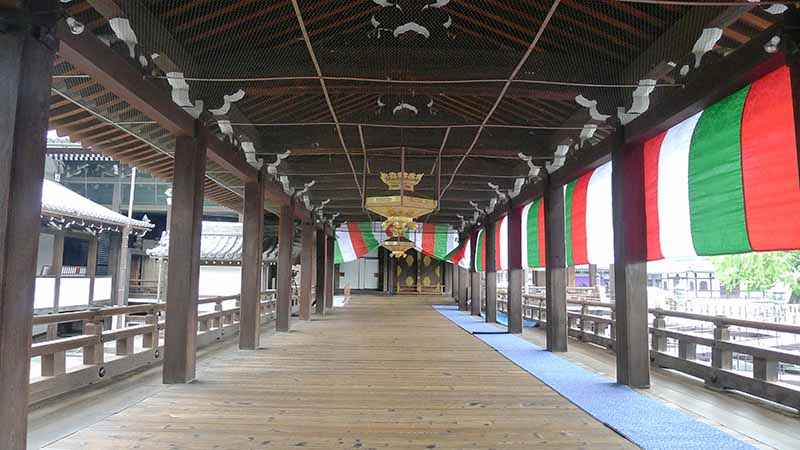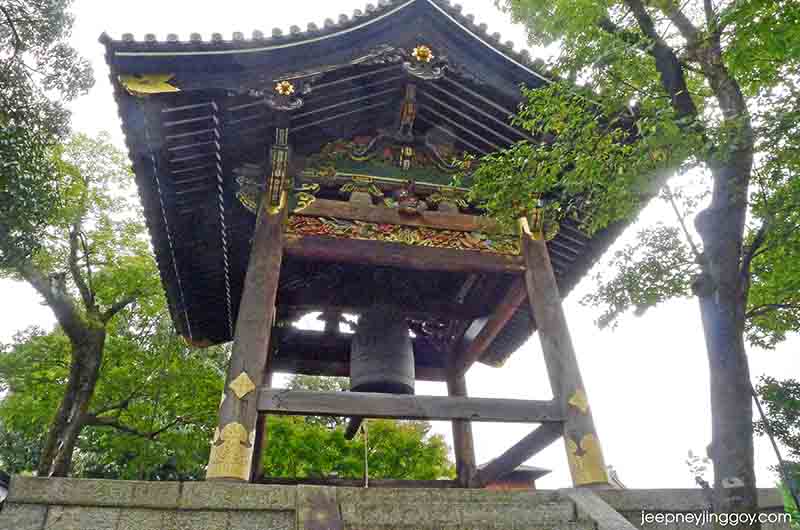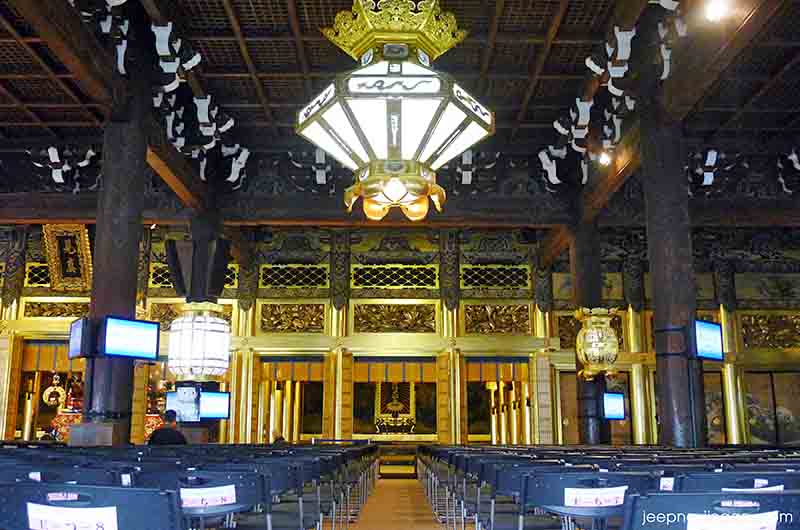.jpg) |
| Nishi Hongani's Amidado (Hall of Amida Buddha) |
After a quick visit to the Koshoji, which I mistook as the Nishi Honganji since both temples have the same moat in the address, I went next door to the right destination.
It was Day 5, my last day in Kyoto, and I was trying to add a few more UNESCO World Heritage site inscribed temples to my list. It was time to tick off Nishi Honganji from the list.
Shinran Shonin founded the Jodo Buddhist path during the Kamakura period. It became one of the largest and most influential Buddhism schools in Japan centuries later.
In central Kyoto, there are two Hoganji temples serving as the headquarters of the two factions of the Hongwanji denomination of Jodo Shinshu, and are designated by its location. Nishi Honganji is at the west (Nishi translates West) and Higashi (or East) Honganji.
Nishi Honganji, which was built in 1591, is the older of the two temples. Higashi Honganji was built 11 years after.
The Nishi Honganji precinct is large, occupying almost the entire block in its address. Within the compound are buildings that are listed as Japan’s National Treasures.
What’s to see in the compound? Let’s start at the point of entry.
The Karamon: Amidado Gate
The four-pillared gate with karahafu gables is a designated National Treasure.
Said to be once part of the former Suhimi Momoyama Castle, the Karamon bears the characteristics from the 16th century Japanese architecture.
It is also called by another name—the “All day gate”, because one can spend an entire day going through the intricate decorative details of the gate.
The Goeido, or the Founder’s Hall.
Another National Treasure, the large Goeido building (measuring 62 meters by 48 meters and 29 meters high) was rebuilt in 1636. This is where Hongwanji’s major observances are conducted.
Enshrined at the central altar is the wooden image of the Jodo Shinshu teaching founder, Shinran Shonin. Along the sides of the founder’s image are portraits of the succeeding Head Priests known as Monshu.
 |
| The corridor connecting the Amidado & Goeido |
The Amidado, or the Hall of Amida Buddha.
The1760-built main worship hall is a National Treasure.
A wooden image of Amida Buddha is enshrined In the central altar, and alongside it are the portraits of six of the Seven Pure Land Masters from India, China, Japan. Portraits of Honen, Shinran’s direct teacher, and Prince Shotoku, one of the first patrons of Japanese Buddhism, are found in the side alcoves.
The Buddhist Scripture Repository.
The repository was designated as an Important Cultural Asset in 2014. Within the 1678-built scripture vault is an entire collection of the Daizokyo Tenkai Edition of Buddhist texts.
Tenkai was the Tendai sect monk,who compiled the texts for over a period of twelve years commencing in 1635.
For about a hundred kilos of silver, Hongwanji acquired the collection in 1648 from the Tokugawa government. This was during the tenure of Ryonyo, Hongwanji's 13th Head Priest.
The Drum Tower.
The multi-storied structure at the northeastern corner of the precinct was recognized as an Important Cultural Asset in 2014.
The drum was used to signify the time of day during the Edo period.
Hiunkaku Pavilion.
The three-storey pavilion in the southeastern corner of the grounds is said to be a surviving architectural masterpiece of the Edo period.
It holds the tearooms of Hideyoshi (regarded as Japan's second "great unifier") and artworks that may have been painted by Hideyoshi himself.
The Great Ginkgo Tree.
The tree is said to be more than 400 years old and has been designated as a Natural Monument by Kyoto city.
It is known by two other names, the “upside-down ginkgo”, because the branches appear like roots reaching up to the heavens, and “water-spraying ginkgo”, because legend has it that the tree sprayed water in an attempt to save the temple halls from catching fire.
The temple’s wooden plugs.
On the floor that bridges the two halls are the most interesting wooden plugs. It does not only cover knot holes and cracks but makes a most interesting detail on the planks. The plugs come in various shapes—flowers, animals, Japanese articles like the fan or a hammer, which are created by the carpenters themselves.
Well, I went over my allotted time in this temple. It was that interesting.
My temple tour came to an end, on this trip at least. I will visit the tother attractions I missed. I will return soon.
 |
| The bell tower |
Also published in the SunStar Davao newspaper.
For lifestyle stories, visit www.dduriandaily.com (www.ofapplesandlemons.com)
Email me at jinggoysalvador@yahoo.com


.jpg)



















CONVERSATION